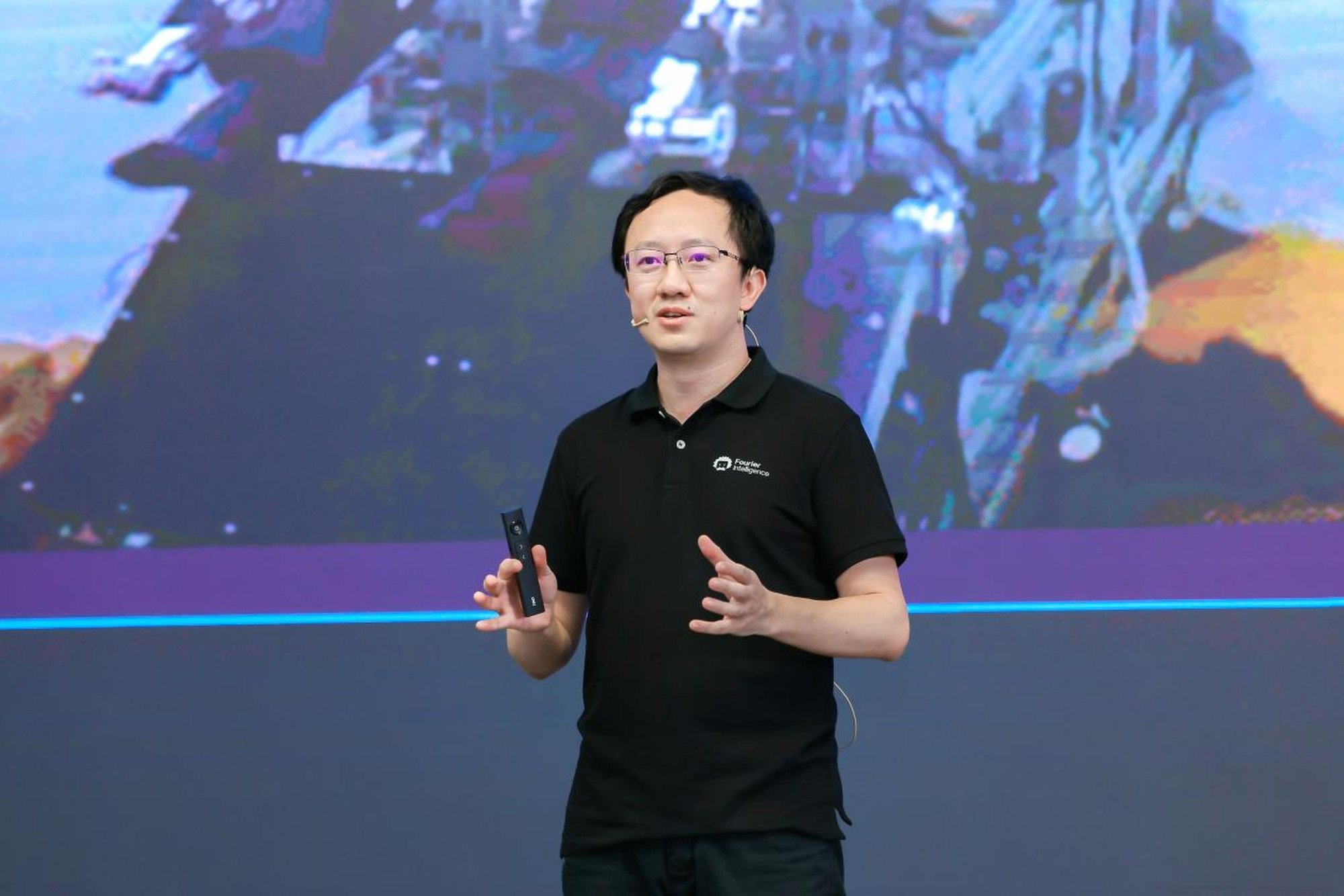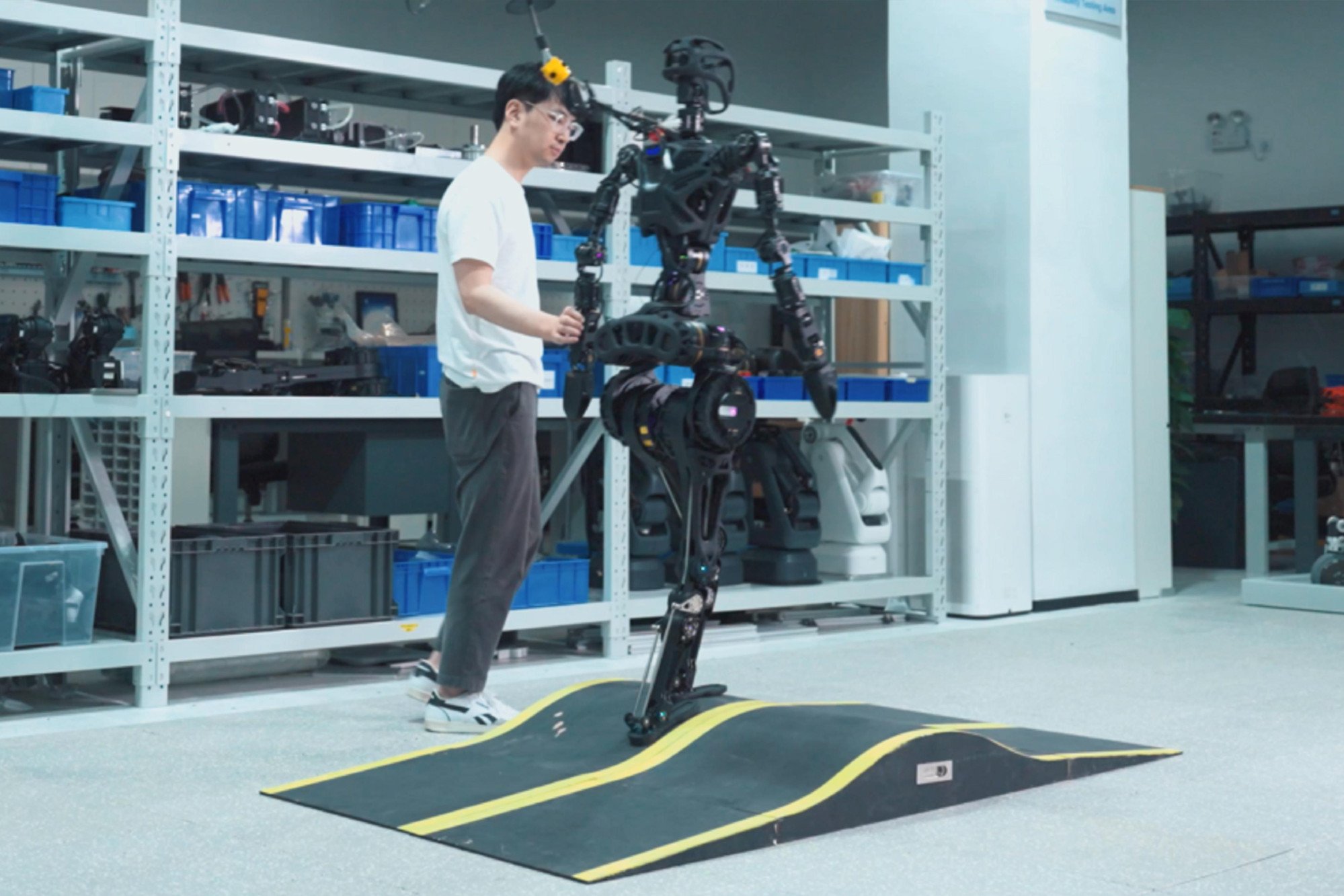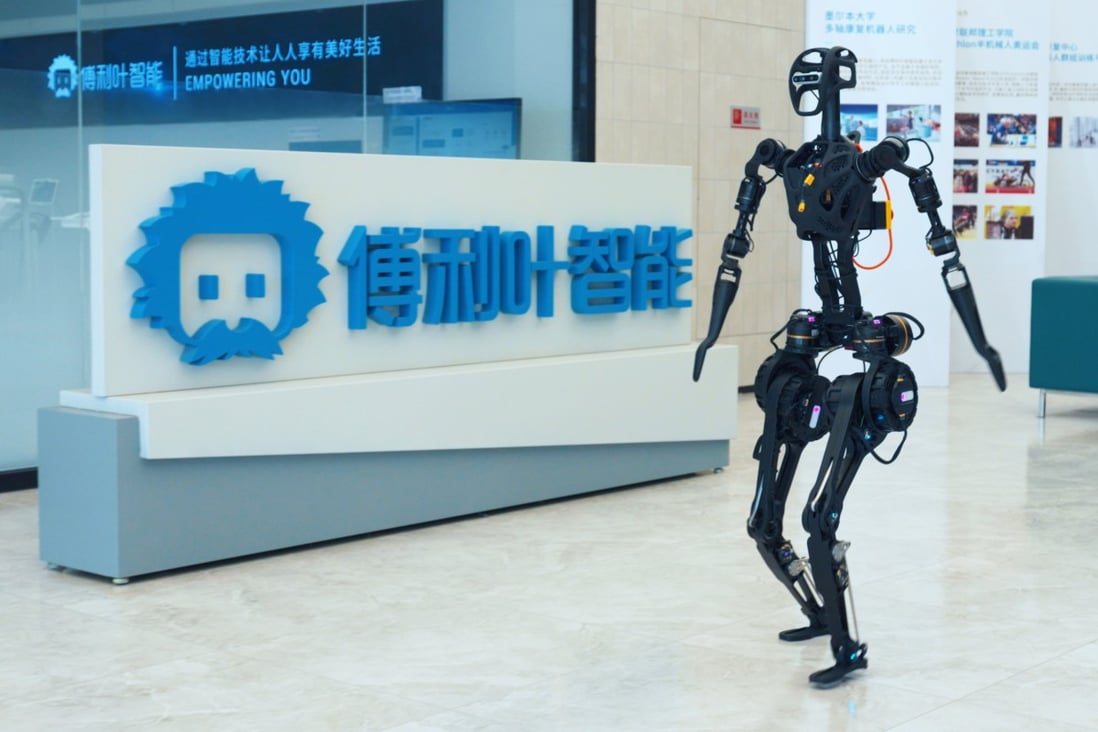World’s first mass-produced humanoid robot? China start-up Fourier Intelligence eyes two-legged robots with AI brains
- The Shanghai-based company plans to begin mass production of its GR-1 robot by end of 2023 and deliver thousands of units next year
- Fourier hopes to collaborate with major AI companies to work on the ‘brain’ of its bipedal robot
When Fourier Intelligence unveiled its lanky, jet-black humanoid robot GR-1 at the World Artificial Intelligence Conference (WAIC) in Shanghai in July, it instantly stole the show.
While the global technology community has been fixated on artificial intelligence (AI) software since the launch of OpenAI’s ChatGPT in November, the Chinese-made GR-1 – said to be capable of walking on two legs at a speed of 5km an hour while carrying a 50kg load – reminded people of the potential of bipedal robots, which are being pursued by global companies from Tesla to Xiaomi.
For Fourier, a Shanghai-based start-up, GR-1 was an unlikely triumph.
“It is an unprecedented attempt by us – we barely had any reference when it came to the technology,” Alex Gu, founder and chief executive of Fourier, said in a recent interview with the South China Morning Post in the Chinese financial capital.
Fourier’s focus has not always been on humanoid robots. Named after the 19th-century French mathematician and physicist Joseph Fourier, the company was originally set up in 2015 in Shanghai’s tech hub Zhangjiang with the aim of developing rehabilitation robotics.
The firm’s current products include a smart exercise bike, a wireless robotic glove and a series of computer-guided contraptions that help users restore movement in their arms and legs.
But just like many of his peers, 42-year-old Gu, a mechanical engineering graduate from Shanghai Jiao Tong University, had long dreamed about creating his own humanoid robot.
So in 2019, after Fourier brought its intelligent rehabilitation devices into hundreds of hospitals and medical care centres in over 10 countries and established itself in the industry, Gu decided it was time to kick off a new venture.
Back then, few companies in the world had successfully launched a humanoid robot due to the high technological barrier and development costs. In the US, there were a handful of projects including Atlas by Boston Dynamics, the company known for its robot dog Spot, and Digit by Agility Robotics.
In China, most firms chose to dedicate their efforts on lightweight products like four-legged robots. Gu thought he could do better.
“Many technologies used in rehabilitation robots are essentially applicable to humanoid robots,” Gu said. “Humanoid robots require very good motors that are both powerful and light, and we are able to develop them ourselves.”

GR-1 was born in a small laboratory on the first floor of the Fourier headquarters, where a group of engineers were busy refining and testing the robot when this reporter visited last month. The team reached a major breakthrough in 2022 – three years after the start of the project – when it managed to make the 1.65-metre tall robot rise up on both legs and walk.
“When we saw it standing up for the first time, untethered and walking around by itself, it was a big encouragement for all our engineers,” said Gu. “It felt like raising a newborn baby.”
Fourier later published an online video of the walking GR-1, drawing compliments from many viewers, but also plenty of scepticism.
“Some overseas viewers said the video was computer-generated,” said Gu. “I understand that the field is still at an early stage and that people will have different opinions, just like some had argued 20 years ago whether electric vehicles would be able to travel on roads.”
In addition to technical challenges, researchers and robotics experts have cautioned that companies still face massive difficulties in commercialising humanoid robots in the broader consumer market.
“[Humanoid robots] mostly live in the labs now and are extremely expensive,” said Zhang Xiaorong, director of Chinese research institute Shendu Technology. “A relatively high-quality machine can cost millions of yuan.”
Those problems have not stopped companies from trying.
Lei Jun, founder of Chinese smartphone giant Xiaomi, in August 2022 showed off on stage the company’s first humanoid robot CyberOne, which was seen to be capable of walking, but not much else.
Less than two months later, Elon Musk, the billionaire founder of Tesla, unveiled a prototype of its highly anticipated Optimus robot during the company’s AI Day. It walked and danced live on stage. The audience was also shown a video of the robot doing tasks like carrying a box and moving metal bars.
Musk said at the WAIC conference last month that Optimus was not intended to “have great intelligence”, but to help humans with “boring, repetitive or dangerous tasks”.
Gu said he shared similar visions with Musk, but added that robots “can also become very good friends of humans by providing emotional value”.
While current humanoid robots still have “large gaps with humans in both movement and cognitive ability”, the development of large language models (LLM) – the type of software that underpins AI chatbots like ChatGPT – could be “epoch-changing”, Gu said.
“LLMs will give robots the ability of logical reasoning, making them much more human-like,” Gu said.

While Gu emphasised that Fourier will focus on developing the hardware that makes up the “body” of the robots and leave AI developers to work on the “brain”, Fourier co-founder and chief strategy officer Zen Koh said a few AI companies had already reached out for potential collaboration in LLMs.
“We’re hoping to work with all the major ones and … as a system, be open,” Koh said.
The GR-1 robot has already been delivered in small quantities to some universities and AI companies for research and development, according to Gu. He plans to begin mass production by year-end and deliver thousands of units in 2024.
Musk last year also claimed that production could start in 2023.
Gu expects Fourier’s humanoid robots, which he said have great potential in various scenarios including elderly care, education and guest reception, to generate more revenue than its rehabilitation robots in the next three to five years.
Still, there is a long way to go before humanoid robots become a part of our daily lives, he said.
“Don’t expect a miracle to come out in a year or so – even for Tesla, we have to give them time [to achieve mass production of humanoid robots],” said Gu.
“But also, don’t underestimate the possibility that this thing may become part of people’s family lives in five or 10 years.”

No comments:
Post a Comment
Comments always welcome!